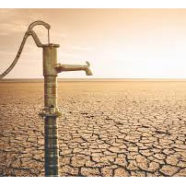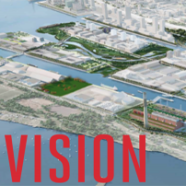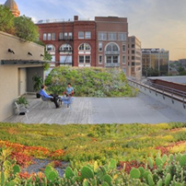What you going to do when the well runs dry?
Designs that work When thinking about your landscape designs are you taking into account the irrigation design and how it may impact the future of our water supplies? Consider the impact Water keeps our planet alive. Where there’s water, there’s life. Our water is our life. Every drop that we live in, on or around must sustain a clean pure consistency for all life on earth to survive. If this water is contaminated, then we all cease to exist. The power that water has over us is immense. We as humans take it for granted until sometimes it is too late. Seventy-five percent of our earth is covered with water and the magnitude of these massive bodies is profound. We are able to send men to the moon and rockets to Mars and beyond and yet we find it difficult to explore ocean depths below two miles down. The incredible density of it makes it almost impossible. Recently science has invented specialized machinery to explore the depths of the ocean floor and have discovered incredible unexplainable life in these depths. The fact that any life can survive in such a compressed atmosphere is in such a diverse contrast to life above water. Even though we know so very little of how it thrives, we do know of one certain fact; “Life above and below water is in a fragile balance by virtue of personal and corporate responsibility”. Design responsibly Every landscape or irrigation professional carries a moral and ethical responsibility to protect not only the quality of water, but to design and install systems that are as efficient as possible with today’s product offerings. If you are not aware of the many water saving technologies currently available in the market then I encourage you to contact the team at Landtech Design and work with them to develop a design to incorporate water conservation utilizing water efficient sprayheads, weather based controllers, weather stations and many other water saving features. Beyond the design I believe also we are charged with the responsibility of educating our customers as to the most efficient way to us these systems we install. If the customer is not comfortable with it, then offer a service that takes this responsibility and worry off their shoulders. Manufactures engineer and build great products that have little chance of succeeding without the help of a professional irrigation designer and contractor who has a vision well into the future. Don’t be the one to “Let your well run dry”. That’s the View From Here…. David...
Read MoreFrom past to future in Toronto
Future of this City… Landtech part of this exciting redevelopment in Toronto Landtech Design is excited to be a part of a major redevelopment project in conjunction with the City of Toronto. As the architects and landscape architects work to take these ideas from concept to reality our team will be involved in the irrigation design to ensure the latest in technology and water efficiency is incorporated for the successful greening of these discarded industrial sites. It’s the next great frontier of development, yet instead of cowboys and tumbleweed, you will likely only find brownfield sites and industrial complexes in Toronto’s sprawling Port Lands. As developable land is becoming harder to assemble, the City is working toward unlocking the potential of the waterfront industrial district, seen as ideal given its proximity to natural landscapes and the Downtown Core. Recently, a set of new plans and images, presented in March to the Waterfront Toronto Board, has revealed details of the ongoing evolution of the Port Lands Precinct Plan, which offers some intriguing insight into the future of the area. Read...
Read Morethe Landscape Architect’s Irrigation Consultant
True to our tag line Often times we refer to ourselves as “the Landscape Architect’s Irrigation Consultant” and one of our recent projects certainly lives up to that tag line. We were pleased to work with the world renowned firms of Oehme van Sweden Landscape Architects and Gensler Architects to complete a project for the ASLA Headquarters in Washington D.C. area as part of their ongoing energy star initiatives. As the consultant to Landscape Architects we designed the irrigation to compliment the designs for their new rooftop garden and corresponding courtyard. Irrigation Design Components Key components to the design involved the incorporation of a complete water harvesting system to collect stormwater from the roofs for complete recycling of the water into the irrigation and weather monitoring to provide optimum water use for the landscape materials. The water harvesting system has multiple flow meters and sensors to monitor not only the stormwater collection volume but also collect data to show the amount of water demanded by the irrigation and any additional make-up water needed. To maximize the water consumption and only use what is needed for the plant material the design incorporates an onsite weather station to measure temperature, humidity, solar radiation, wind and rainfall to calculate the daily ET (evapotranspiration rate). Additionally soil moisture sensors are installed to track soil conditions in key areas within the landscape. The majority of the rooftop irrigation and courtyard utilizes drip irrigation to also reduce overspray, evaporation and deliver water to the roots of the plants. All of the irrigation is then controlled with the Toro Sentinel Control System that provides complete monitoring and control incorporating weather driven updating, moisture sensors and monitoring for all flow conditions. Sentinel Water Management Software (WMS) is a Microsoft® Windows-based program that allows users to control daily irrigation operations and scheduling from a powerful yet easy-to-use platform. With the ability to control up to 999 field satellites from one location, users have a water management tool that provides ultimate customizability and reliability. ASLA Efforts to Green Communities The headquarters of the American Society of Landscape Architects helped Washington, D.C., rank second on the U.S. Environmental Protection Agency’s (EPA) 2014 list of the top U.S. cities with the most ENERGY STAR certified buildings. ASLA has participated in EPA’s ENERGY STAR certification since 2008, and its headquarters building was ENERGY STAR-certified again in 2013. Among buildings the same size, ASLA’s energy performance is in the top 11 percent. ASLA’s headquarters employs energy-efficient systems and practices-including a green roof that reduces energy usage by 10 percent in winter months. Sustainability is part of the organization’s leadership and staff culture. Your Irrigation Consultant If you are looking to design a water efficient irrigation system or looking to update an existing area to incorporate new technology we invite you to contact us at Landtech Design. No project is too small or large for our team to tackle. Working with your ideas and designs we can develop a plan to fit your budget and concept requirements. Name(required) Email(required) Company Comment(required)...
Read MoreRainwater Harvesting for 2017
Old practices now new ideas… Rainwater harvesting dates back to early civilizations, however in 2017 we see the cost of water driving the interest in collection of rain water to the forefront in building designs. From large commercial buildings to residential design, the incorporation of collecting water has seen a wide variety of systems developed, and varied applications on successfully recycling water into our environment. You can incorporate a simple rainwater collecting tank off your home roof collection downspout, or to large scale underground holding tanks and pumps for large commercial applications. Harvesting Components Understand the basic components to every rainwater harvesting system: Filtration – to collect the water you must first plan to filter and remove debris as the rainwater is coming off the roof or collecting surface Sanitation – for large scale and public collection sites you will need to consider sanitation to kill algae, parasites or other pests that may enter the storage unit Chlorination – for simple residential systems the addition of chlorine may solve most algae or similar issues Water Storage System – from barrels, large steel tanks, underground storage…correctly sizing the storage for the site collection is key to success Applying or using Harvested Water – Simple gravity feed or pumping systems with full monitoring and controls is available depending upon size of system For ease and simplicity for most residential installations we recommend working with complete kits available through Kenney Outdoor Solutions and Atlantic Water Gardens. These kits, complete with submersible on-demand pumps provide everything you need to store and distribute up to 1000 gallons of harvested water. Rainwater Harvesting Benefits As water conservation continues to be a key role in reducing our total consumption of our valuable resource of water consider the following benefits of Rainwater Harvesting is meeting your water conservation goals: 1.Easy to maintain- the overall cost of installation and ongoing maintenance is minimal and easy to maintain making it an easy option to incorporate with most residential or commercial irrigation designs. 2.Reducing water utility bills – water collected by the systems can be used for several non-drinking functions and thereby reducing the use of city water and lowering monthly water bills. Rainwater is free from many chemicals and makes it suitable for irrigation and watering gardens. 3.Reduces demand on groundwater-with increased population and higher demand for water, in many areas there are concerns on depletion of precious ground water supplies. To learn how a rainwater harvesting system might be incorporated into your next irrigation design Name(required) Email(required) Company Name(required) Comment(required) Submit...
Read MoreTools and Technology: Irrigation Design Series
Basic considerations for contracting irrigation design services include provider availability with design capabilities needed, independence from affiliation with product suppliers, cost of services, and contracting method (lump sum, hourly, etc.). There are a variety of independent irrigation designers located in various US regions. To find an irrigation designer new you, check out ASLA’s Firm Finder or the American Society of Irrigation Consultants (ASIC). Generally, expect to pay slightly more for independent irrigation design consultants compared to using a contractor or getting design assistance from an irrigation manufacturer. The benefits include higher quality, freedom to select any product best suited for the design needs, attention to detail, thorough information about total lifecycle cost of the system, full spectrum of maintenance considerations, and a wide range of bids for installers. The contractor or irrigation manufacturer could place limits on the range products, not be open to substitutions, unable to approve using equivalent performance products, and might be tied to fewer installers. In some cases, shortcuts would include using a performance specification. Examples include placing the burden of pipe sizing based on a friction loss table on the field contractor, or pump sizing (flow, pressure, dynamic, and static head) and pump control definition delegated to the pump fabricator instead of being set by the designer. Examples of a subconsultant agreement for irrigation design are available by contacting a member of the Irrigation Association (IA) or the American Society of Irrigation Consultants (ASIC). Considerations for self-performing include knowledge of hydrology, hydraulic design fundamentals, up-to-date product performance knowledge, and staff capability. Advantages include more control over cost to produce the design, greater ability to make changes during design, bid phase or construction, and a long term ability to build knowledge and skill with each completed project; compared to contracting with others for irrigation design. For water conservation, it can be a sales advantage for securing future projects to track water savings cumulatively per project. These records can be maintained from a consultant designer or by self-performing irrigation design. Regular training sessions in irrigation design for staff are available from Irrigation Association (IA). Product information can be secured from national or regional product reps and by attending ASLA Chapter or ASLA Annual meeting and EXPO events. Factors common to both delivery methods (self-perform or contract for services) include risk and liability control for design, establishing the design life, setting the minimum required design criteria (usually set by state, regional, county or local agency requirements plus irrigation industry professional society standards), and setting performance criteria set by the designer above and beyond the minimum codes; including ASIC, IA, LEED, LID, or SITES for water conservation and lifecycle cost benefit considerations for longevity of system service. First, set high expectations for project outcomes such as protection of fresh water natural resources, disaster avoidance, and reduced potential for litigation or third party claims. Next, if you can’t meet your own high expectations using in-house irrigation design, then seek professional assistance from other providers. Documented litigation and paid claims settlements show irrigation designs have caused or contributed to loss of life, personal injury, plus direct or consequential property damage. Impacts are from too much (or not enough) water applied, overspray on vehicle travel areas or structures, and a wide array of technical problems; product failures (tolerable levels and unusual levels), over pressure, design errors, system leaks, properly designed system not inspected or tested after improper installation, irrigation system at a storm water facility enabling cross connection contamination due to backflow in the public water supply system. A failed irrigation system that compromises the top, face, or toe of a...
Read More






